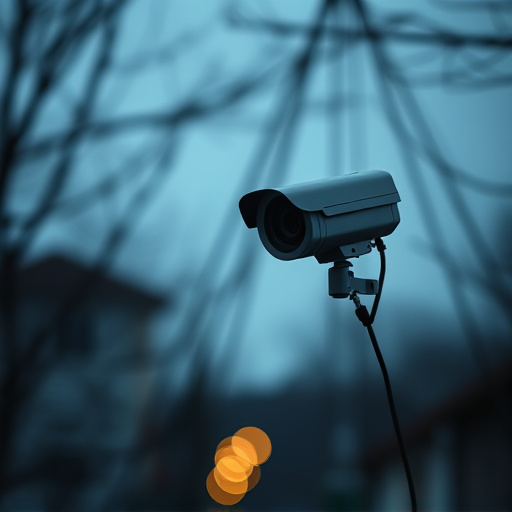The Wireless Spy Camera Phone App transforms smartphones into home security tools, offering remote access to live video feeds via hidden cameras around residential properties. Users can monitor spaces, receive motion alerts, and communicate through the app. This technology provides peace of mind but requires responsible use, strict adherence to local laws, and consent from property owners. After sweeping for surveillance devices using specialized equipment, analyzing footage is crucial to identify security risks and improve protection measures.
“Uncover the secrets within your own home with our comprehensive guide to surveillance device sweeps. In an era where privacy is a paramount concern, understanding how to identify and detect hidden wireless spy cameras has become essential for homeowners. This step-by-step resource delves into the world of the Wireless Spy Camera Phone App, providing insights on pre-sweep assessments, advanced sweeping techniques, post-analysis interpretation, and crucial legal considerations. Equip yourself with knowledge to ensure a safe and effective surveillance practice.”
- Understanding Wireless Spy Camera Phone App: Unveiling the Technology
- Pre-Sweep Assessment: Identifying Potential Surveillance Device Locations
- Sweeping Process: Step-by-Step Guide for Residential Properties
- Post-Sweep Analysis: Interpreting Results and Data Collection
- Legal Considerations and Privacy Tips for Safe Surveillance Practice
Understanding Wireless Spy Camera Phone App: Unveiling the Technology
The rise of wireless technology has brought about innovative tools for home security, and one such advancement is the Wireless Spy Camera Phone App. This cutting-edge application allows users to remotely monitor their residential properties with ease. By installing a small, hidden camera on the property and pairing it with a smartphone via a stable internet connection, homeowners gain access to live video feeds at any time, providing peace of mind and enhanced security.
The app’s technology is straightforward yet powerful. It enables remote access, real-time alerts for motion detection, and even two-way audio communication. Users can receive notifications on their phones when someone enters the property or triggers the camera’s motion sensor, allowing them to respond promptly to any potential threats or intruders. This level of accessibility and control makes the Wireless Spy Camera Phone App an attractive option for those seeking a comprehensive home surveillance solution.
Pre-Sweep Assessment: Identifying Potential Surveillance Device Locations
Sweeping Process: Step-by-Step Guide for Residential Properties
Sweeping Process: Step-by-Step Guide for Residential Properties
The process of conducting a comprehensive surveillance device sweep on a residential property involves careful, systematic steps to ensure every nook and cranny is covered. It begins with a thorough inspection of all entry points, including doors, windows, and any potential access points in the exterior walls. This initial check helps identify any visible or easily accessible hidden cameras or surveillance devices.
Using specialized equipment like thermal imaging cameras and metal detectors, sweep teams can detect wireless spy camera phone apps and other advanced surveillance gadgets that might be disguised as everyday objects. Once suspicious items are located, a closer inspection is conducted using high-resolution cameras to capture detailed images for further analysis. The final step involves clearing and securing the property, ensuring all identified devices are safely removed or disabled, leaving the residence free from unwanted surveillance equipment.
Post-Sweep Analysis: Interpreting Results and Data Collection
After completing a surveillance device sweep, the next crucial step is analyzing the results and interpreting the data collected. This involves meticulously reviewing footage from any wireless spy camera phone apps used during the sweep to identify potential security risks or suspicious activities. By carefully studying the captured images and videos, you can pinpoint areas of concern and assess the overall effectiveness of the sweep.
During post-sweep analysis, it’s essential to consider the type and placement of surveillance devices. Reviewing the data collection process helps ensure that all angles and points of access were accounted for. This comprehensive review allows you to make informed decisions about enhancing security measures, identifying areas for improvement, and implementing better practices to protect your residential property from potential threats.
Legal Considerations and Privacy Tips for Safe Surveillance Practice
When conducting a surveillance device sweep on residential property, it’s crucial to balance effective monitoring with strict adherence to legal considerations and privacy best practices. Using wireless spy camera phone apps for observation can be legally sound if implemented responsibly. Familiarize yourself with local laws regarding hidden cameras; some areas have specific regulations about the placement and use of surveillance equipment. Always obtain prior consent from property owners, especially in shared spaces like common areas or yards, to avoid legal repercussions.
Privacy is paramount during these sweeps. Be mindful of potential unintended subjects caught on camera—neighbors, pets, or passing pedestrians. Regularly review and erase recorded footage, keeping only what’s necessary for the intended purpose. Ensure devices are securely stored when not in use to prevent unauthorized access. Additionally, consider using encrypted connections for data transmission with wireless spy camera apps to safeguard sensitive information.
The integration of the Wireless Spy Camera Phone App has transformed home surveillance, offering both convenience and potential privacy risks. By understanding the technology, conducting thorough pre-sweep assessments, and adhering to legal considerations, homeowners can effectively utilize this tool. Following a structured sweeping process and analyzing post-sweep data provides valuable insights into potential security breaches. Embracing these practices ensures a safe and informed approach to residential property surveillance while respecting privacy rights.
